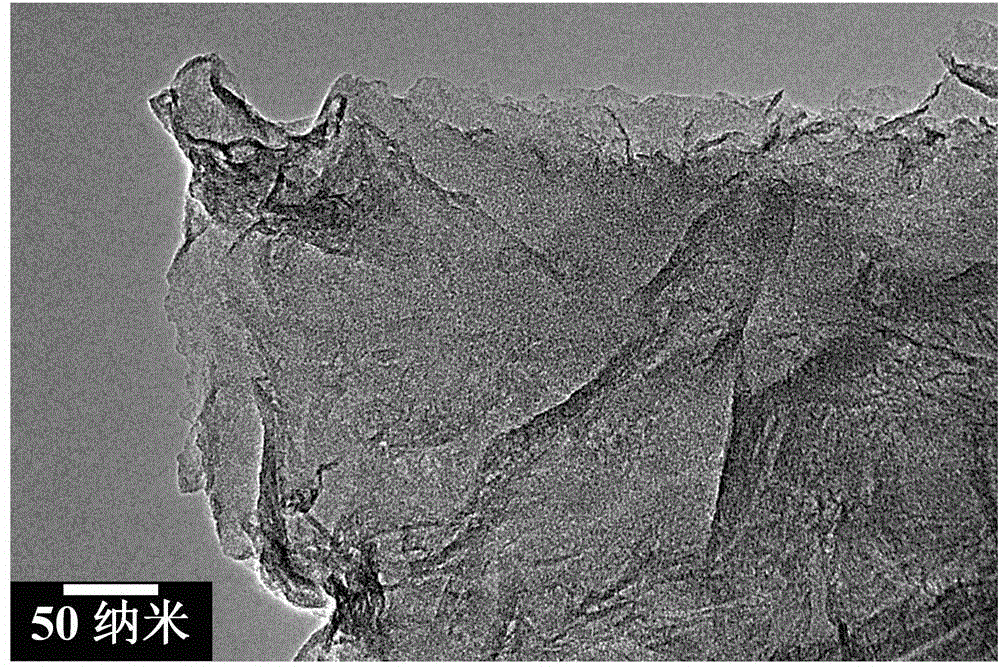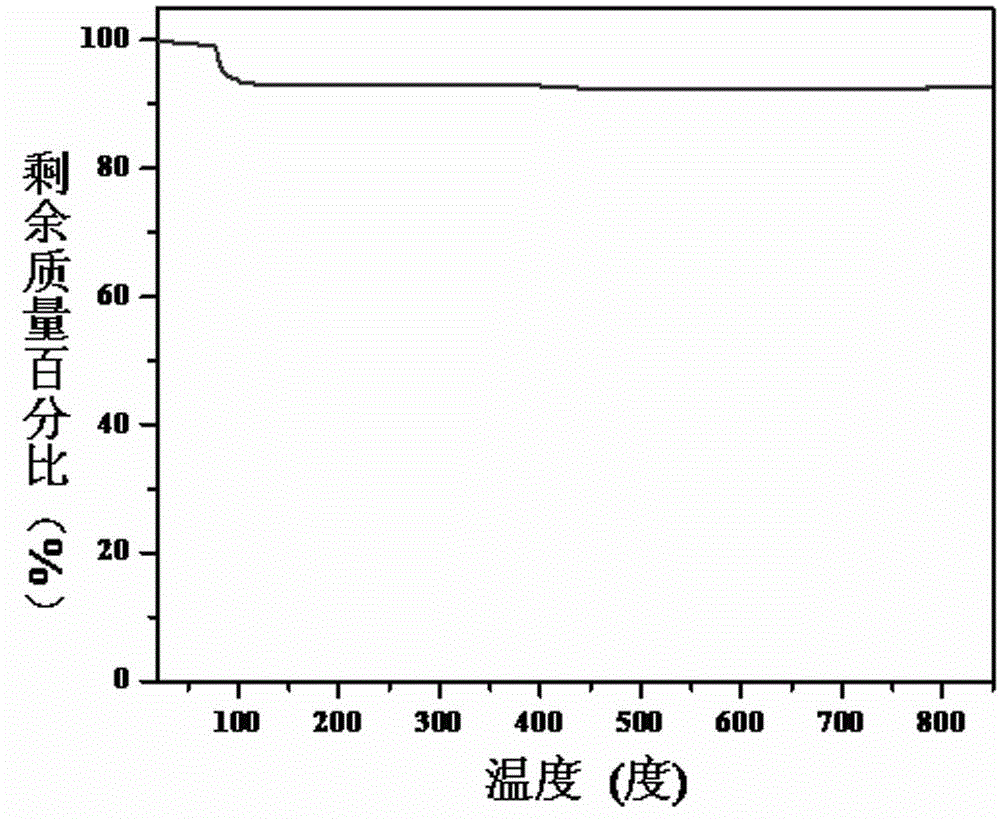Preparation method of ultra-high density cobaltosic oxide/porous graphene nano-composite anode material for lithium ion battery
A technology of porous graphene and cobalt tetroxide, applied in nanotechnology for materials and surface science, battery electrodes, nanotechnology, etc., to achieve excellent electrochemical performance, overcome poor electronic conductivity, and enhance electronic conductivity.
- Summary
- Abstract
- Description
- Claims
- Application Information
AI Technical Summary
Problems solved by technology
Method used
Image
Examples
Embodiment 1
[0035] (1) First, graphene oxide is prepared by a conventional chemical method (Hummers method) for preparing graphene oxide. (2) Weigh a certain mass (1 g) of the prepared graphene oxide, dissolve it in 100 mL of water for three times, and disperse until uniform by ultrasonic, then add 1000 mL of concentrated nitric acid solution, and use high-power ultrasonic for 4 hours. After centrifugation, the obtained solid product is taken out and dried at 60°C to obtain graphene with uniform nanoporous defects on the surface;
[0036] (3) Select the appropriate CoCl 2 , mixed with urea, porous graphene, and water ultrasonically in a certain proportion, transferred to a hydrothermal kettle, hydrothermally reacted at 55°C for 8 hours, centrifuged to take out the solid product, washed several times with water, and dried at 60°C;
[0037] (4) The above solid product was heated at 250°C in air for 6 hours, and finally reduced in a tube furnace at 400°C for 2 hours under inert gas conditio...
Embodiment 2
[0039] (1) Firstly, graphene oxide is prepared by a conventional chemical method (Hummers method) for preparing graphene oxide;
[0040] (2) Weigh a certain mass (5 g) of the prepared graphene oxide, dissolve it in 500 mL of water for three times, and disperse it uniformly by ultrasonication, then add 4000 mL of potassium dichromate solution, and use high-power ultrasonication for 10 hours. After centrifugation, the obtained solid product is taken out and dried at 60°C to obtain graphene with uniform nanoporous defects on the surface;
[0041] (3) Choose the right CoSO 4 , mixed with urea, porous graphene, and water ultrasonically in a certain proportion, transferred to a hydrothermal kettle, hydrothermally reacted at 75°C for 10 hours, centrifuged to take out the solid product, washed several times with water, and dried at 60°C;
[0042] (4) The above solid product was heated at 300°C in air for 10 hours, and finally reduced in a tube furnace at 600°C for 4 hours under inert...
Embodiment 3
[0044] (1) Firstly, graphene oxide is prepared by a conventional chemical method (Hummers method) for preparing graphene oxide;
[0045] (2) Weigh a certain mass (50g) of the prepared graphene oxide, dissolve it in 1000 mL of water for three times, and disperse until uniform by ultrasonic, then add 5000 mL of perchloric acid solution, and perform high-power ultrasonication for 1 day. After centrifugation, the obtained solid product is taken out and dried at 60°C to obtain graphene with uniform nanoporous defects on the surface;
[0046] (3) Select the appropriate cobalt nitrate, mix it with urea, porous graphene, and water in a certain proportion, transfer it to a hydrothermal kettle, and conduct a hydrothermal reaction at 80°C for 12 hours, centrifuge to take out the solid product, and wash it several times with water for 60 ℃ drying;
[0047] (4) The above solid product was heated at 350°C in air for 8 hours, and finally reduced in a tube furnace at 500°C for 3 hours under ...
PUM
| Property | Measurement | Unit |
|---|---|---|
| particle size | aaaaa | aaaaa |
| particle diameter | aaaaa | aaaaa |
Abstract
Description
Claims
Application Information
 Login to View More
Login to View More - R&D
- Intellectual Property
- Life Sciences
- Materials
- Tech Scout
- Unparalleled Data Quality
- Higher Quality Content
- 60% Fewer Hallucinations
Browse by: Latest US Patents, China's latest patents, Technical Efficacy Thesaurus, Application Domain, Technology Topic, Popular Technical Reports.
© 2025 PatSnap. All rights reserved.Legal|Privacy policy|Modern Slavery Act Transparency Statement|Sitemap|About US| Contact US: help@patsnap.com



